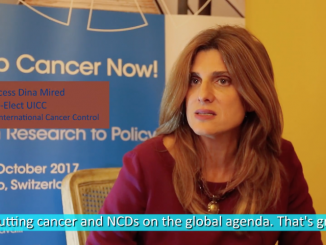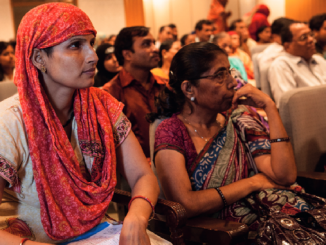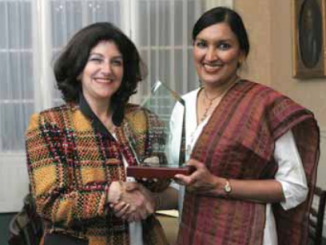Well-documented biorepositories are essential for cancer research. Currently, major biobanks are located in the developed world, which represents the minority global population; however, countries with low-resource settings contribute more than 50% of the global cancer burden. Therefore, there is an urgent need to establish next generation biorepositories in developing countries.
This article was first published in Nature Reviews Clinical Oncology vol. 10 no.8, and is published with permission. © 2013 Nature Publishing Group. doi:10.1038/nrclinonc.2013.119
Biospecimens are a precious and irreplaceable resource for cancer research, which requires a large number of specimens in the form of well-annotated biobanks or biorepositories.[1] Biobanking is the organised collection and storage of biospecimens and clinicopathological information, and is undoubtedly highly useful for the study of complex human diseases such as cancer. In addition to primary tumour specimens, biopsy of metastatic cancer is now becoming a standard procedure before secondline and salvage therapy. The specimens from these metastatic tumours are increasingly regarded as an invaluable resource for cancer research to accelerate the knowledge of intrinsic and acquired resistance to treatment.[2]
The establishment of next-generation biobanks (storing primary and metastatic samples with the relevant clinical annotation) in developing countries is crucial to build comprehensive and globally inclusive biorepositories and provide an unbiased platform for cancer research, especially for genomic-based translational studies. The existence of heterogeneous patterns of cancer, owing to diverse ethnic populations in countries such as India, provides a highly attractive source for research materials. Moreover, cancers of the cervix, stomach, liver, lip and oral cavity are predominantly found in the population of developing countries, but are rare in resource-rich countries.[3] Consequently, repositories of biological specimens collected from limited geographical regions might not accurately reflect the complexity and heterogeneity of cancers in a global context. This limitation severely constrains the extrapolation of data emerging for tumours, particularly those of specific geoethnic background or similar cancers in different parts of the world, and might account for the seemingly variable patterns of treatment response among patient populations. To obtain an inclusive spectrum of cancer pathobiology, and accelerate cancer research and managementthere is an indispensable need to encourage biobanking activities across the globe. This need is particularly acute in developing and resourcelimited regions, where cancer-related mortality rates are much higher and survival rates are poorer compared to the developed regions of the world. According to the WHO GLOBOCAN estimation, 56% of total cancer incidence and 64% of cancer-related deaths occur in the economically developing world.[4] The total number of new cancer cases is expected to greatly increase in developing countries during the coming decade.[3]
Given the research potential of biobanks, significant financial support has been raised for such resources in many countries, including the Iceland DeCode Biobank (US$0.8 million annually), the UK Biobank (US$109 million), Biobank Japan (US$218 million for 5 years), Genomic Research in African Diaspora* (US$18 million), and the Gambian National DNA Bank (US$0.6 million for the first 5 years).[5,6] However, there is a lack of comprehensive initiatives to harmonise biobanking processes and regulations across the world. Unfortunately, at present, there are only a limited number of notable biobank initiatives in developing countries, including: the Cancer Centre Tissue Bank, Fudan University, China; the Tata Memorial Hospital Tissue Bank, India; the Malaysian Tissue Bank; the Iran National Tumour Bank; and the Bangkok Biomaterial Centre, Thailand,[5] primarily owing to the lack of awareness, paucity of designated research budgets and infrastructure, and social, ethical and political barriers. [6] For example, clinical trial irregularities have led to stricter ethical committee reviews and governmental intervention, which make clinical research more difficult. Downstream analysis of biospecimens yields a plethora of information about a patient, so protection of patient confidentiality and obtaining prior informed consent are essential to avoid legal and social concerns. Over the past two decades, a few promising biobanks, containing very large population collections (≥10,000 samples), have been established in developing countries across Asia and Africa to support multidisciplinary cancer research.[5] However, the procedure to obtain samples contained in these biobanks is not well organised, and often resources are not open for sharing with other institutes owing to ethical and logistical concerns.[7]
Completion of the Human Genome Project has provided an impetus for new approaches to cancer research. The post-genomic era has seen advancement in next-generation sequencing, high-throughput transcriptomics, proteomics and metabolomics technologies for molecular diagnostics and targeted therapeutics of cancer, leading to personalised medicine.[8] The integrative ‘omics’ profiling of individual patients with cancer has opened new opportunities for comprehensive biomarker discovery and oriented clinical trials in cancer research.[9] Developing countries, such as India and China, have a significant role in cancerrelated research in a global context. However, a lack of comprehensive biorepositories in most developing countries affects this progress of ‘omics’-based cancer research. There are difficulties in obtaining bigger clinical cohorts for designing conclusive studies, and pre-analytical variations arising from sample collection, storage and handling procedures impair the validity of results, especially for trials involving biomarkers. Additionally, a lack of guidelines and stringent, time-consuming ethical approval procedures to obtain clinical specimens often slow the pace of research activities.
Biobanking-related activities are significantly lower in the developing world. For example, India is a geographically diverse country that has a population of over one billion people, but has only one cancer tissue biorepository – the Tata Memorial Hospital Tissue Bank in Mumbai. Cancer research efforts are plentiful in developing countries, and there is strong support from the governmental funding agencies, but most studies are investigator-driven and limited to very few biological samples. We want to emphasise the importance of an effective downstream research process, which is heavily dependent on the availability of good quality disease and control clinical samples in large numbers. The need to establish nextgeneration biorepositories in developing countries should, therefore, attract the attention of global policy makers, governmental and non-governmental funding agencies. Additionally, quality checks, and complete annotation of each sample with clinicopathological and sociodemographic details, are both important to ensure the authenticity of results from downstream analysis. Initiatives that include the establishment of the International Society for Biological and Environmental Repositories to address the technical, legal, ethical, uniformity and quality assurance issues associated with biobanks are appreciable. Further more, there is a lack of dialogue and cooperation among the small regional biorepositories existing in the majority of the developing countries.
Aside from the establishment of new biorepositories, there is also a need to integrate existing biobanks thereby building larger clinical resources that can be easily accessed by the researchers from different parts of the world.[1] A recent comprehensive survey by the Global Business Intelligence Research team revealed that, even at the global level, only 30% of biobanks have connections with other biobanks or research institutions. The remaining 70% were stand-alone, which clearly indicates the paucity of cross-talk among the existing biorepositories; the international sharing of biobank resources is still a long way off.[10] To that end, there is a successful endeavour in India to establish a national cancer grid, connecting the existing and proposed cancer centres and establishing a high-quality uniform standard to diagnose and treat patients with cancers across the country. Similar initiatives will be appreciable for nationalisation of individual stand-alone biorepositories that exist in different parts of a country. We suggest that development of regional cancer biobanks should be linked with such national cancer biobanks. However, standardised operating procedures, including maint enance of uniformity in sample collection, storage and documentation, is essential for the success of biorepositories for cancer research.
* This was renamed in 2006 as Translational genomic Research in the African Diaspora (TgRIAD), which is part of The National Human Genome Center at Howard University
Author affiliations
Sandipan Ray and Sanjeeva Srivastava, Wadhwani Research Centre for Biosciences and Bioengineering, Department of Biosciences and Bioengineering, Indian Institute of Technology Bombay, Powai, Mumbai, India; Aliasgar Moiyadi, Department of Neurosurgery, Advanced Centre for Treatment Research and Education in Cancer, Tata Memorial Centre, Kharghar, Navi Mumbai, India
Acknowledgements
We gratefully acknowledge Sangeeta Desai, in charge of the Tumour Tissue Repository, Tata Memorial Centre, for valuable information about the tumour tissue repository. The glioma biomarker research was supported by the Department of Biotechnology, India grant (No. BT/PR14359/MED/30/916/2010 and BT/PR13562/ MED/12/451/2010)
References
1. RW Watson, EW Kay and D Smith. (2010) Integrating biobanks: addressing the practical and ethical issues to deliver a valuable tool for cancer research. Nat Rev Cancer 10:646–651
2. M Basik et al. (2013) Biopsies: next-generation biospecimens for tailoring therapy. Nat Rev Clin Oncol http://dx.doi.org/doi:10.1038/nrclinonc.2013.101
3. P Kanavos. (2006) The rising burden of cancer in the developing world. Ann. Oncol. 17 (Suppl. 8):viii15–viii23
4. A Jemal et al. Global cancer statistics. (2011) CA Cancer J Clin 61:69–90
5. SK Sgaier et al. (2007) Public health. Biobanks in developing countries: needs and feasibility. Science 318:1074–1075
6. A Cambon-Thomsen. (2004) The social and ethical issues of post-genomic human biobanks. Nat Rev Genet 5:866–873
7. A Cambon-Thomsen. (2003) Assessing the impact of biobanks. Nat Genet 34:25–26
8. EA Vucic et al. (2012) Translating cancer ‘omics’ to improved outcomes. Genome Res 22:188–195
9. S Roychowdhury et al. (2011) Personalized oncology through integrative high-throughput sequencing: a pilot study. Sci Transl Med 3:111ra121
10. GBI Research. Biobanks – 2012 Year Book. http://www.gbiresearch.com/Report.aspx?ID=Biobanks-2012-Year-Book






Leave a Reply